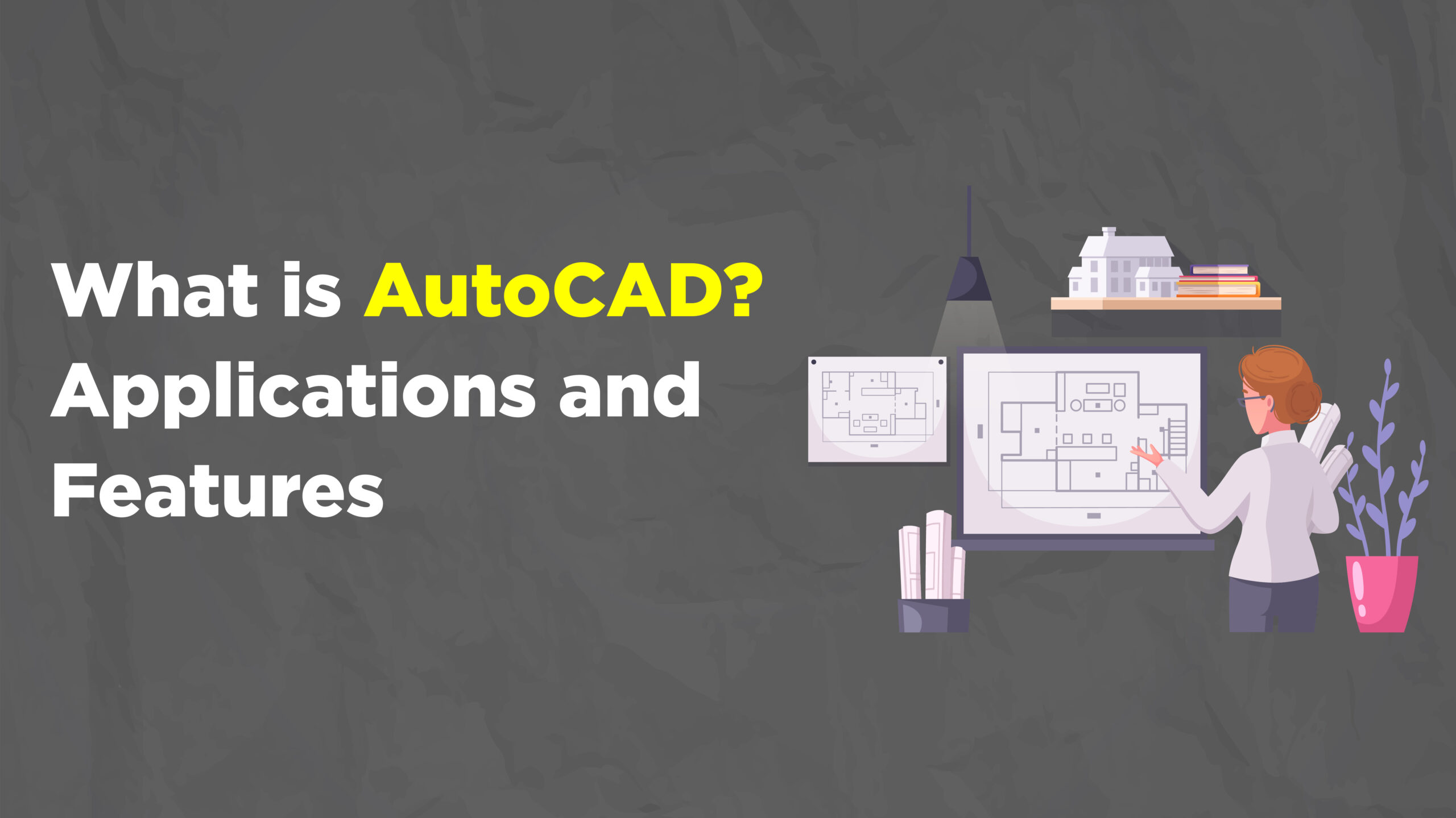Have you ever dreamt of designing the next iconic skyscraper, a sleek prosthetic limb, or even the interior layout of your dream home? The world of Computer-Aided Design (CAD) makes these dreams a tangible reality, and AutoCAD sits at the forefront of this revolution. But what exactly is AutoCAD, and how can it become the key to unlocking your creative potential in the design field?
Birth of a Design Powerhouse: AutoCAD’s
Developed in 1982 by Autodesk, AutoCAD holds the prestigious title of the foremost commercial CAD software in the world. Its journey began with a vision to create a user-friendly and accessible design platform, replacing the tedious and error-prone drafting methods of the past. Today, AutoCAD boasts over 1 million active users globally, transforming industries like architecture, engineering, construction, manufacturing, and product design. Its impact is undeniable, with its influence evident in everything from towering buildings and intricate machinery to furniture layouts and circuit board designs.
AutoCAD’s Feature
AutoCAD is much more than just a fancy drawing tool. It’s a comprehensive suite packed with features designed to empower every stage of the design process. Here’s a deeper dive into its core functionalities:
- Drafting Fundamentals: The foundation of any design lies in precise lines, shapes, and annotations. AutoCAD provides a robust set of tools for creating these elements with meticulous control. You can leverage various line types, modify shapes with ease, and add clear annotations to enhance communication and clarity in your designs.
- Dimensioning and Annotations: Clear communication is paramount in the design world. AutoCAD empowers you with automatic dimensioning tools. These tools ensure precise measurements are embedded directly within your drawings, eliminating the need for manual calculations and potential errors. Additionally, the software allows for the inclusion of detailed notes and explanations directly on your designs, facilitating seamless collaboration and clear instructions for construction or manufacturing teams.
- 2D Drafting Powerhouse: For projects that require meticulous 2D representations, AutoCAD offers unparalleled capabilities. Create detailed and accurate drawings with a vast library of hatching patterns to represent different materials and textures. Utilize layer management features to organize your drawings efficiently, allowing for better control and visibility of specific design elements. Powerful editing tools further enhance your workflow, enabling you to modify existing elements with precision and ease.
- 3D Modeling Made Easy: The world of design isn’t confined to flat surfaces. AutoCAD provides a smooth transition from 2D to stunning 3D models. Utilize intuitive commands to create solids, surfaces, and meshes, breathing life into your designs and allowing for a more comprehensive understanding of spatial relationships and functionality. Whether you’re designing a building or a complex mechanical component, AutoCAD’s 3D modeling capabilities empower you to visualize your creations from all angles.
- Collaboration is Key: The design process often involves collaboration between multiple individuals. AutoCAD fosters seamless teamwork through cloud-based features like Autodesk Drive. This allows you and your colleagues to work on the same project simultaneously, regardless of location. Real-time co-editing functionalities further enhance collaboration, enabling instant updates and streamlining the design review process.
- Customization Galore: The beauty of AutoCAD lies in its adaptability. With a vast library of add-ons available on the Autodesk App Store, you can extend the software’s capabilities to cater to specific design disciplines. These add-ons offer specialized tools and functionalities for tasks like architectural detailing, structural analysis, or even 3D printing preparation, ensuring you have the right tools at your fingertips for any design challenge.
Step-by-Step Guide to Mastering AutoCAD and Building a Fulfilling Career:
The world craves talented AutoCAD professionals, and with dedication, you can carve your niche in this exciting field. Here’s a roadmap to guide you on your journey:
- Fuel Your Passion: The first step is to identify the area of design that ignites your passion. Explore various industries that utilize AutoCAD. Are you captivated by the intricacies of mechanical engineering or the grandeur of architectural design? Perhaps the world of product design or animation sparks your creative fire. Understanding your passion will guide you towards specializing in the specific toolsets and applications most relevant to your chosen field.
- Master the Fundamentals: A solid foundation is crucial for success. Enroll in online courses offered by platforms like Udemy, Coursera, or LinkedIn Learning. These platforms provide comprehensive training programs that delve into the core functionalities of AutoCAD. Additionally, explore the wealth of video tutorials available on YouTube channels like Autodesk Learning. These tutorials offer step-by-step guidance on specific tools and techniques, allowing you to learn at your own pace and revisit topics as needed.
- Practice Makes Perfect: Don’t be afraid to experiment and put your newfound knowledge to the test. There are tons of online resources offering project-based learning experiences. Platforms like AutoCAD 360 provide access to a library of sample projects and exercises. By actively engaging with these projects, you’ll gain valuable hands-on experience and hone your skills in a practical setting. As you progress, consider undertaking personal projects that challenge you and allow you to explore specific design interests.
- Certification: A Confidence Booster: While not always mandatory for entry-level positions, pursuing AutoCAD certifications offered by Autodesk can significantly enhance your resume and showcase your expertise to potential employers. These certifications validate your proficiency in specific AutoCAD skills and knowledge sets, making you a more competitive candidate in the job market. Autodesk offers various certification levels, from AutoCAD Certified User (ACU) to AutoCAD Certified Professional (ACP), catering to different skill levels and design disciplines.
- Build Your Portfolio: A strong portfolio is your gateway to showcase your design skills and creativity to potential employers. Create a dedicated website or leverage online platforms like LinkedIn to display your AutoCAD projects. Include a variety of projects that demonstrate your versatility, ability to solve design challenges, and proficiency in different AutoCAD features. Consider incorporating client testimonials or project descriptions to add context and value to your portfolio.
- Network Like a Pro: Building professional connections is crucial for career advancement. Attend industry events, conferences, or workshops related to your chosen design field. These events offer valuable opportunities to network with established professionals, learn about current industry trends, and potentially discover job openings. Additionally, utilize online platforms like LinkedIn to connect with professionals and companies in your field. Engage in discussions, share your work, and actively seek out opportunities to showcase your skills and connect with potential mentors or employers.
Beyond the Software: Essential Skills for a Successful AutoCAD Career
While AutoCAD proficiency is a cornerstone of success, additional skills are essential for thriving in the design industry. Here are some key areas to develop:
- Technical Drawing Skills: A thorough understanding of technical drawing conventions and principles is crucial for creating clear and accurate designs that can be easily interpreted by engineers, builders, or other professionals.
- Design Thinking: The ability to approach design challenges creatively and systematically is highly sought-after. Develop your problem-solving skills and learn to think critically about design solutions, considering functionality, aesthetics, and cost-effectiveness.
- Communication Skills: Effective communication is paramount for success in any collaborative environment. Be able to clearly articulate your design ideas, both verbally and visually. Hone your writing skills to create concise and informative project documentation.
- Industry Knowledge: Gain a basic understanding of the specific industry you’re interested in. Familiarize yourself with relevant materials, construction methods, and design standards. This knowledge will allow you to create designs that are not only aesthetically pleasing but also practical and meet industry requirements.
The Future is Bright: A Rewarding Career Awaits
With a global demand for skilled AutoCAD professionals, a dedicated approach and continuous learning can pave the way for a fulfilling career in this dynamic field. The job market offers diverse opportunities, from entry-level positions as drafters or CAD technicians to specialized roles like architectural BIM modelers, mechanical design engineers, or product designers. The possibilities are truly endless, and with your newfound skills and knowledge, you can be a part of shaping the world around you.
Ready to Start Your AutoCAD Journey?
AutoCAD is more than just software; it’s a powerful tool that unlocks a world of creative expression and professional fulfillment. Take the first step today and embark on your exciting journey as a designer. Explore the vast resources available online, hone your skills through practice and continuous learning, and build a strong portfolio that showcases your talent. With dedication and passion, you can turn your design dreams into reality!

